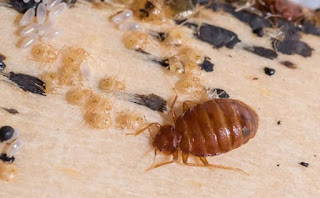One of the most successful life forms on earth are ants, in fact according to many pest management professionals ants are at the top of the list when it comes to structural pests. What makes them so successful is their efficiency, tenaciousness, resiliency and numbers. It's a good thing that most ants live outdoors, however, some make their nest in or around structures and therefore can become a nuisance, get into food, attack humans and/or cause structural damage. In order to successfully get of ants, properly identifying the type of ants and why they are drawn to the structure is key.
Types of Ants
There are many different types of ants. Identifying these type of ants that are invading your property is huge because each species are drawn to different foods and environments. There are 3 types of ants that are commonly known to invade your house or place of business. Those 3 are Carpenter Ants, Pavement Ants, and Argentine Ants. Let's take a look at Carpenter Ants. Carpenter Ants are drawn to wood, but not just any wood. They like to nest in wood that has a high moisture content and suffered water damage and has been softened up by decay. High humidity is essential for the development of carpenter ant eggs and larvae. They do however have the ability to create an environment of humidity and can thus spread into sound wood.
Pavement Ants are commonly found in commercial buildings. They get their name because of nesting under the pavement and sidewalks. They are known for making soil mounds commonly seen in sidewalks, pavement cracks, around foundations and decorative stones. Anything that provides a protective cover you can find pavement ants. Inside structures they can be found nesting inside walls, in wall insulation, and under floors. This species of ants particularly likes to be near heat sources. Indoor swarms can happen if they are found under slabs.
Argentine Ants are seen above when indoor nests near moisture sources such as water pipes, sinks, and potted plants. When conditions outdoors are unfavorable, such as too wet or too dry, they can invade buildings in large numbers. Because they crawl over refuse, sputum, and carrion to mention a few, they are responsible for spreading disease organisms.
These are just three species of ants commonly found in structures, but there are many more such as Fire Ants, Acrobat Ants, Thief Ants, Odorous House Ants and the Little Black Ants each with their own habits and preferences, so identification is a key to long term control. Identifying the problem ant brings us to the next key formula of getting rid of ants - Inspection
Inspection and Treatment
There are three components to an inspection - 1) Finding the Nest, 2) Detecting Foraging Routes and 3) Spotting conditions conducive to infestations. Many people use over the counter gels or liquid baits to fight an infestation. Improperly placements of gels or liquid baits will do little good. Also used are over the counter sprays, but this only kills the ants that are seen or foraging for food. Locating the nest goes a long way if you are to eliminate ants for good. Sometime locating the nest is not possible, so looking for other conditions is helpful. Look for and repair broken seals around windows and doors, water damaged wood and cracks in foundation walls. Of course sanitation is very important inside as well as outside. Correct any moisture related issues inside and outside the structure. Keeping the perimeter of the structure dry and keeping vegetation growth at least one foot from the structure will aid in ridding your home or business from ants.
If these tactics are ineffective call your local pest control professional. They have experience in locating and treating the nest, applying a barrier treatment, baiting and applying a residual that is safe and long lasting.
Labels: ant nest, ants, carpenter ants, infestation, inspections, moisture, pest control











